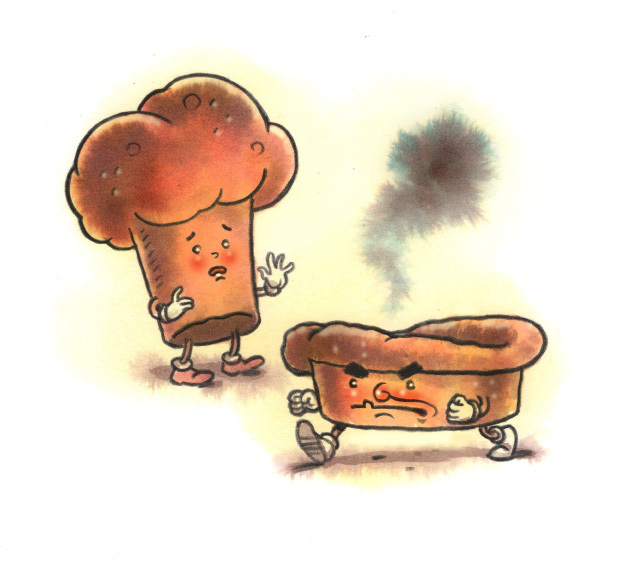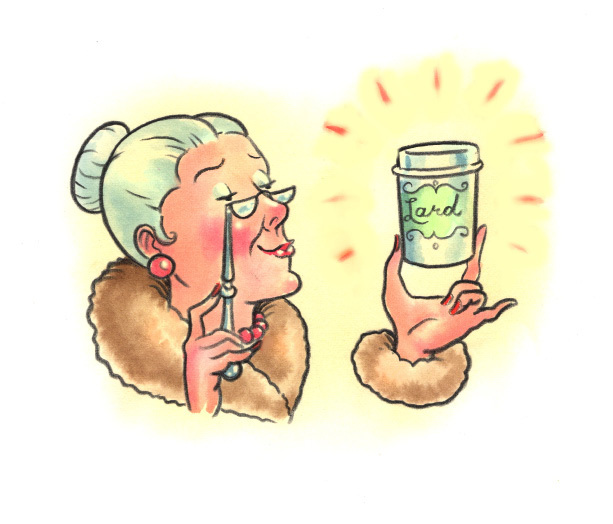
In Pursuit of Perfect Popovers
Popover pans seem to perpetually perplex our listeners. Do you really need one to make popovers? Can a muffin pan be used instead?
A great popover should have a crisp crust, an airy yet custardy interior and—most importantly—its signature billowy shape. A popover pan might appear to be nothing more than a tall muffin tin, but it actually is uniquely designed to deliver these results. Popover pans are designed to convey heat directly to the batter, which is quite wet. As the batter bakes, that heat turns the moisture into steam, causing the popovers’ dramatic rise. The deep cups of a popover pan give the batter plenty of room to rise, and provide support for the sides of the popovers as they do so. The pan shape also promotes swift, even heat distribution, crucial for achieving popovers’ trademark crispy exterior and tender interior. By contrast, the wide, shallow cups of a muffin tin don’t provide the same level of support or space. As a result, popovers baked in muffin pans spread outward rather than upward, resulting in short, squat pucks. Still, we know not everyone has—or wants to buy—a popover pan. So we tested ways to make a standard muffin pan work. For maximum puff, we needed as thin and wet a batter as possible. We started by using low-fat milk instead of whole. We also let the batter rest for 25 minutes to give the flour time to fully hydrate. Next, we skipped nonstick pans. To get the best rise, the batter would need to grip the sides of the cups; nonstick would be too slippery. We filled each cup three-quarters full, but left the two center cups empty to mimic the way a popover pan allows for better heat circulation. Finally (and somewhat unexpectedly), we found we got the best results if near the end of baking we pierced each popover with a skewer. This released steam and let the interiors dry a bit, helping them crisp and hold their shape.

Fancy Fats
Our listeners have noticed supermarkets increasingly carrying high-end, artisanal brands of lard. We wondered whether these offer any advantages over the more conventional—and less expensive—options.
Lard is rendered pork fat, which was traditionally used in pie crusts and biscuits and for frying; Mexican bean recipes often call for it as well. Though generally out of favor, in recent years, lard has made something of a comeback. To test whether the artisanal lards now appearing in supermarkets are worth the price, we tested two widely available options: the conventional Goya lard and its gourmet-grade competitor, Epic brand rendered pork fat. We tried both in pie crust and refried beans. The differences were stark: With the refried beans, the Epic lard imparted a pronounced porky flavor, giving them extra-savory depth. The Goya lard was subtler in flavor; it also yielded smoother mashed beans. As for the pie crusts, the Epic lard produced an especially crisp crust—but with surprisingly gamey notes. The Goya pie crust was slightly less flaky, but with a more desirably neutral flavor. Though we liked the texture of the Epic lard pie crust, we wouldn’t recommend it for a typical sweet pie. However, it would be stellar in a savory meat pie or a quiche. Ultimately, if you’re looking for a fat that adds more savory complexity and richness, premium lard is worth it. But if you mainly use lard for sweet pastries, skip the pricey stuff.






